If it was a boxing match, it would be a 12-rounder where the fighters slug lumps out of each other from start to finish. The final stage of last month's Critérium du Dauphiné featured attack after attack after attack, with big guns such as 2016 race winner and Tour de France champion Chris Froome (Team Sky) unleashing every possible blow on race leader Richie Porte.
Froome had endured a disappointing season thus far and was aware that he needed a win. He was equally conscious that each of his three Tour wins had been preceded by victory in this traditional warm up event. Cycling is a superstitious sport and in Froome’s mind, the best harbinger of another Tour win was to continue that pattern of success.
Sensing weakness on the part of Porte's BMC Racing Team, other big names also threw the kitchen sink at the Australian. Alejandro Valverde (Movistar) and Fabio Aru (Astana) were also particularly active; the net effect was a particularly gruelling final stage, a four-summit scrap that wore everyone down.
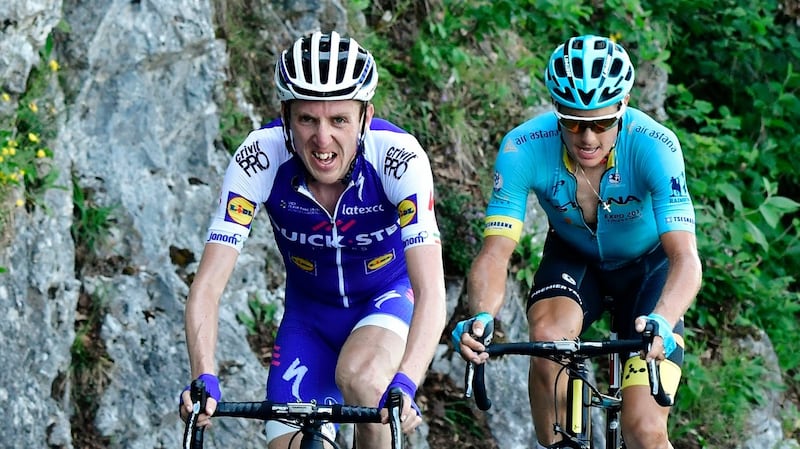
Then Dan Martin made his move. The QuickStep Floors team leader attacked with seven kilometres to go on the final climb and was joined by Astana's Jakob Fuglsang. The Dane was in his career-best form and subsequently pushed ahead of Martin, but the Irishman dug in, continuing to drive all the way to the line. He finished just 12 seconds back in second.
Equally importantly, he jumped from eighth to third overall, ending up one minute and 32 seconds behind race winner Fuglsang, 1:22 up on a deposed Porte and - significantly for his morale - beat Froome by one second.
The performance was highly encouraging in advance of the Tour de France.
“The Dauphine was unexpected,” Martin admits, speaking to the Irish Times this week. “Similar to last year, everything had gone pretty well beforehand. But I had really held back in training. I hadn’t done any intensity. I just rode there to let the race do its job, as far as picking the form up.
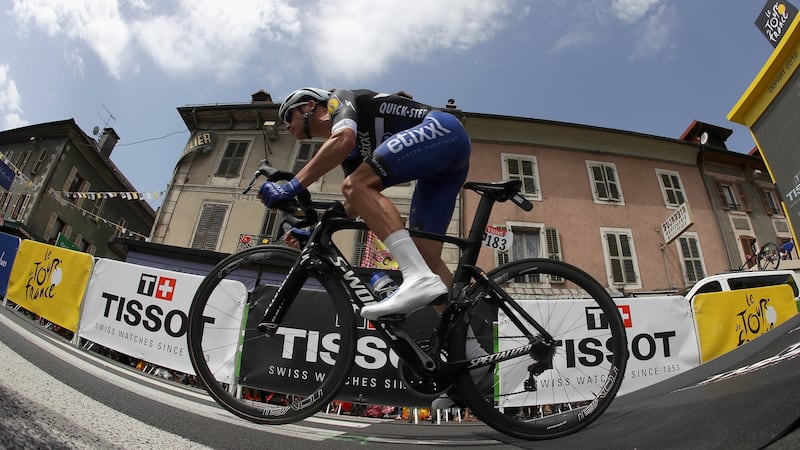
"Throughout this year I've seen that if I do one race, I will be going really well afterwards. We saw that at the start already when I did the Volta a la Comunitat Valenciana in February. I went to the Volta ao Algarve afterwards and won the stage. I just need that one race under my belt to get really good legs."
Although he had finished third overall in the Dauphiné last year, holding back in training this time around meant that the race would primarily be about sharpening his condition prior to the Tour rather than being a major goal in itself.
Yet his legs were so good that he found himself inching up the overall standings as the week progressed. From 32nd after day two, he improved to 28th, then 18th, then seventh, slipped to eighth on the penultimate day and then jumped to third by the end.
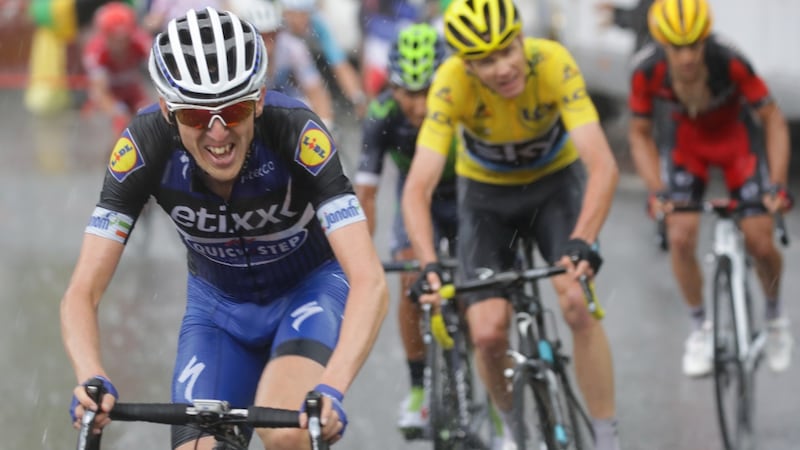
He’s greatly encouraged by that, and also has good vibes about the time trial. Traditionally his weakest attribute as a stage race rider, he has made progress, even if his 26th place in the Dauphiné’s race against the clock suggests otherwise.
“The race was a good test for the time trial as well. Unfortunately we had a bit of a mechanical issue in the time trial, something which it cost me a lot of time,” he explains, underlining that the result is misleading. “I can’t go into details about what happened, because of the sponsors [of the equipment in question], but I lost a lot of time that I wouldn’t otherwise have.
“One plus for the Tour is that it means that people will still underestimate me in the time trial. But I am very happy with the progress I have made.”
Since the Dauphiné, things have continued to bolster his morale. “The legs were good there and afterwards, I seem to have got even better.”
As a result he’s upbeat. “I have never felt better going into the Tour de France.”
Martin is the nephew of 1987 Tour de France winner Stephen Roche and seems to have inherited many of the same genes. He took up the sport at a tender age and made progress year-on-year. Turning professional with the Garmin-Chipotle team in 2008, he went on to win the Route du Sud in his debut season, the Tour of Poland two years later, a stage of the Vuelta a España in 2011 and the Liège-Bastogne-Liège Classic plus a stage of the Tour de France in 2013.
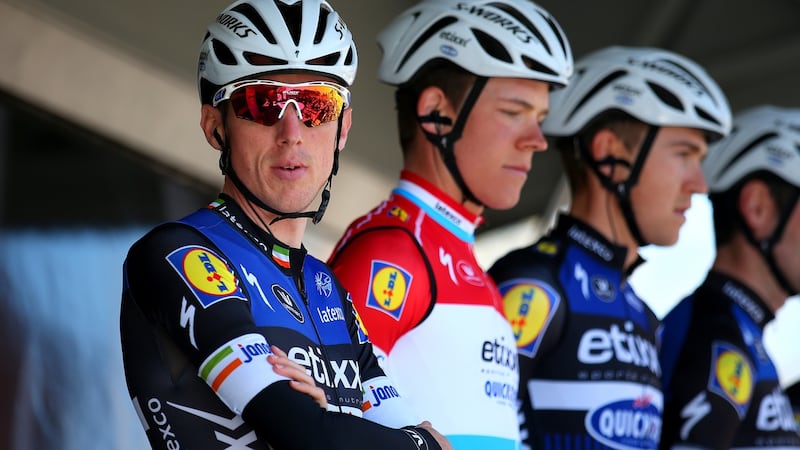
In 2014 he won another Classic, Il Lombardia, then in 2015 he was second, second and fourth on stages of the Tour. The QuickStep team recognised his value and brought him on board as a team leader for races such as the Tour de France.
Martin had ridden well in the general classification before, but had faded in the final week. That didn’t happen last year. He remained aggressive right to the end and finished ninth overall. However, on the final climb of several mountain stages he attacked early, was hauled back and lost time as a result.
It’s possible that a more conservative approach - at least in terms of the timing of his attacks - could have yielded a top five finish overall.
“I know how to race the Tour de France now,” he says, speaking of the lessons learned. “I have never raced the Tour de France in the front before like that. And now I know it is different to the Vuelta.
“In the Vuelta those attacks that I did would have worked, and in the Dauphine they worked, because it is a lot more open racing. Whereas people don’t try to win the Tour de France, they try not to lose what they have got.”
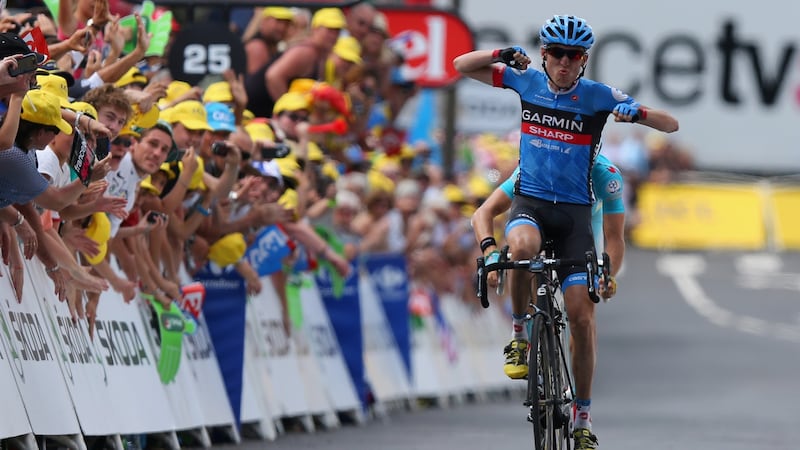
What Martin means is that rather than gambling everything to try to overcome time deficits, once gaps open riders become more conservative. “They try to protect their fifth or sixth or seventh or eighth in general classification,” he elaborates. “And nobody rides for eighth in general classification in any other race of the year.”
He believes the lessons learned have changed him as a competitor. “I think tactically I am a lot more calm. And that comes with confidence as well,” he says. “I am a bit more calculating in the way I am riding. Hopefully that doesn’t mean more boring . . . in the end, hopefully it leads to better results.”
Martin is now 30-years-old. As a competitor ages they grow stronger physically, become tougher mentally and can also draw on the experience of previous years. He should be in his prime as a Grand Tour rider, and that excites him.
Having held back in the Critérium du Dauphiné, yet finishing third overall is similarly encouraging. Although he was also third in 2016, he had worked harder to be in shape for the event. Having a podium finish come to him with less effort bodes well.
So, what does he think of this year’s route?
“It is a strange course,” he answers. “It is very different to other Tours. The biggest difference is that you don’t have what are these day after days of essentially . . . well, not boring stages, but what the fans view as boring stages.
“I think for a GC rider, it is a horrible course, as there are so many unpredictable stages. I don’t think there are two days in a row that won’t affect the general classification.”
It will be vital for riders to be ready to go from day one, and also to keep their wits about them at all times. Missing important moves must be avoided, and so too getting caught up in crashes.
“Looking at the first week, you have a stage one time trial,” he says. “Stage three is an uphill finish. Stage five is an uphill finish. Stages eight and nine are both tricky mountains, essentially, and very tricky finishes. And then stages 12 and 13 are mountains. 17 and 18 are mountains, and 20 is a time trial. So it is a Tour de France where you have to be good for the whole three weeks.
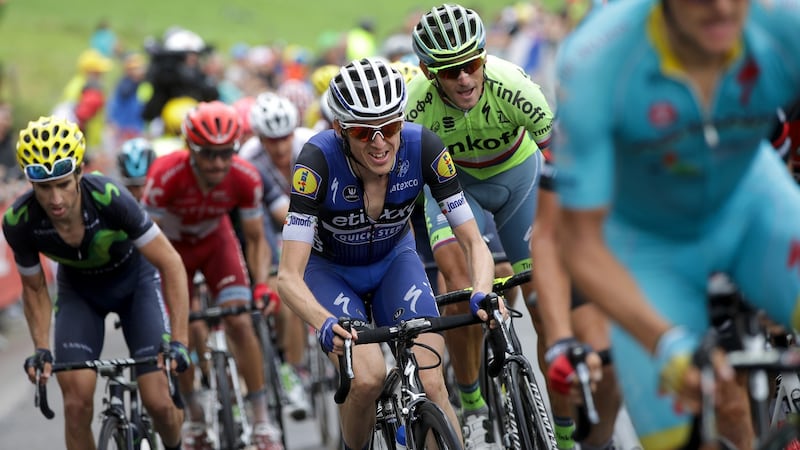
"Contrast that with 2015, for example - we had uphill finishes at the Mur de Huy and Mur de Bretagne early on, but the first real mountains weren't until stage 10. There were basically a lot of sprint stages at the start and a lot of mountains at the end. This time, the difficulties are interspersed throughout the course. And that makes for a very nervous race. Everybody is saying it is going to be a more open race, and hopefully that will suit me."
So, the big question: with ninth overall last year under his belt and reason to be believe he is going better, what is he aiming for this time around?
“I think everybody knows that you aim for the top,” he answers. “I think top five is a realistic aim after last year. That is what you aim for after a top 10. But it is one of the most hotly contested races for a long time, I think. There are a lot of very, very talented riders at the start line in top condition. We will see. Potentially it would be incredible to finish top five in Paris.”
Still, part of him is at least wondering if he could aim even higher.
“Why not finish on the podium?,” he ponders. “It would be incredible, especially 30 years on from Stephen’s achievement, to get as far as that podium in Paris.”
Dan Martin will give an exclusive inside view during the race in a regular Irish Times diary.












